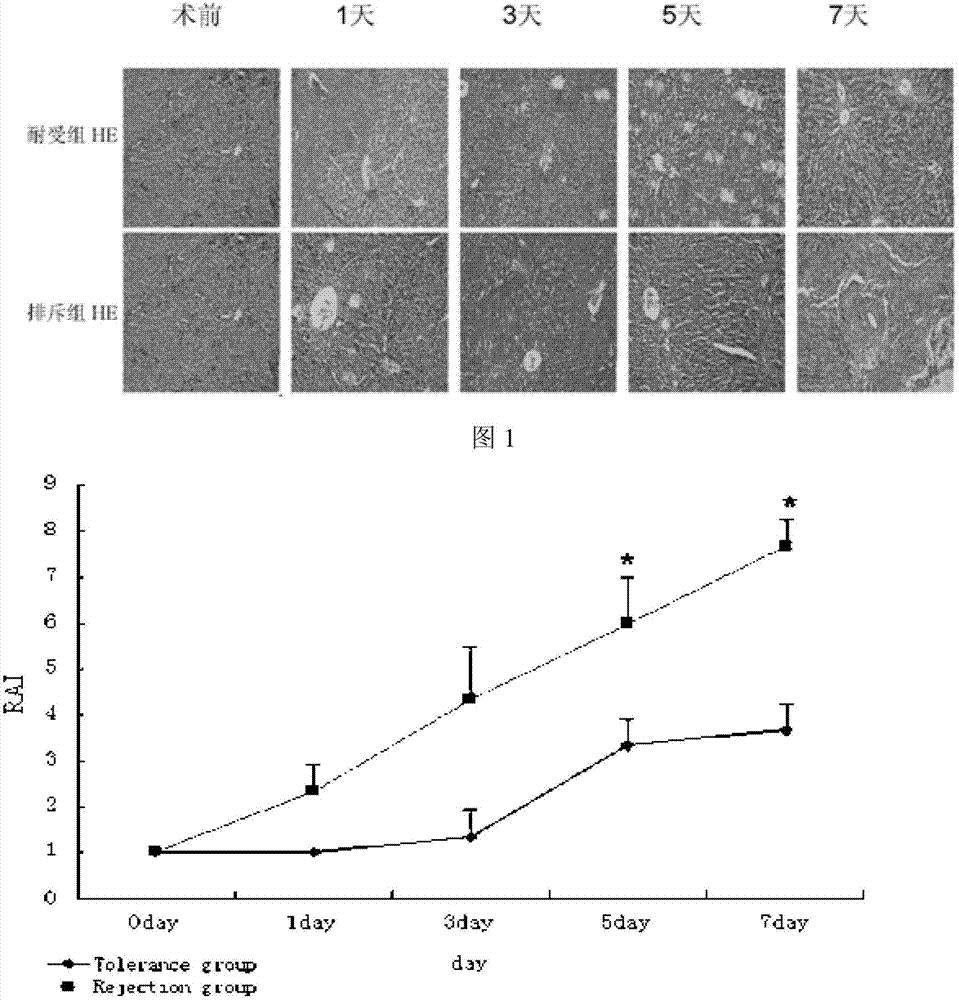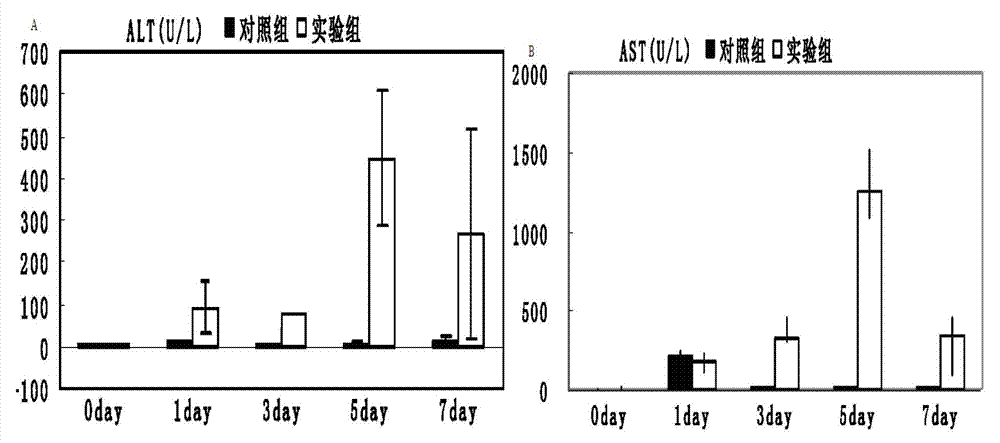Application of human interleukin 22 in preparation of marker for liver transplantation rejection reaction
A rejection reaction, human interleukin technology, applied in the field of liver transplantation rejection markers, can solve the problem of lack of IL-22
- Summary
- Abstract
- Description
- Claims
- Application Information
AI Technical Summary
Problems solved by technology
Method used
Image
Examples
Embodiment 1
[0020] Embodiment one animal modeling
[0021] 1. Establishment of orthotopic liver transplantation model in experimental animals and rats
[0022] Male BN (RT1 n ) rats and LEW (RT1 1 ) rats, SPF animals, weighing 220-270 g, were purchased from the Experimental Animal Center of Daping Hospital, Third Military Medical University. Raise them in a constant temperature and clean environment, maintain a 12-hour circadian rhythm, and abide by the principles of experimental animal use and management. The donor and recipient were fasted for 8 hours before the operation, and were not allowed to eat or drink after the operation. The rat liver transplantation rejection model was divided into rejection group and tolerance group, and the rejection group was LEW(RT1 1 ) rats as donor BN (RT1 n ) rats as recipients, tolerance group BN (RT1 n ) rats as donor LEW(RT1 1 ) rats as recipients, 15 pairs in each group. The rat orthotopic liver transplantation animal model was established b...
Embodiment 2
[0033] Example 2 Application of Human Interleukin 22 in the Preparation of Markers of Liver Transplantation Rejection
[0034] 1 Immunohistochemical reaction
[0035] Using IL-17, IL-22 and INF-γ antibodies as working solutions (purchased from Beijing Boaosen Biotechnology Co., Ltd.), immunohistochemical S-P method (purchased from Zhongshan Jinqiao Company) was performed according to the instructions.
[0036] Such as Figure 4 From the immunohistochemical test results shown, it can be seen that the expression of IL-17 and IL-22 in the rejection group was more obvious than that in the tolerance group on the 1st and 3rd day after operation.
[0037]2Western-blot detection
[0038] Primary antibody: IL-17 was purchased from Beijing Biosen, IL-22 was purchased from Santa Cruz, HRP secondary antibody and internal reference primary antibody were purchased from GenScript. The tissue total protein was extracted by the tissue homogenate method, and the loading sample was taken out ...
PUM
 Login to View More
Login to View More Abstract
Description
Claims
Application Information
 Login to View More
Login to View More - R&D
- Intellectual Property
- Life Sciences
- Materials
- Tech Scout
- Unparalleled Data Quality
- Higher Quality Content
- 60% Fewer Hallucinations
Browse by: Latest US Patents, China's latest patents, Technical Efficacy Thesaurus, Application Domain, Technology Topic, Popular Technical Reports.
© 2025 PatSnap. All rights reserved.Legal|Privacy policy|Modern Slavery Act Transparency Statement|Sitemap|About US| Contact US: help@patsnap.com



